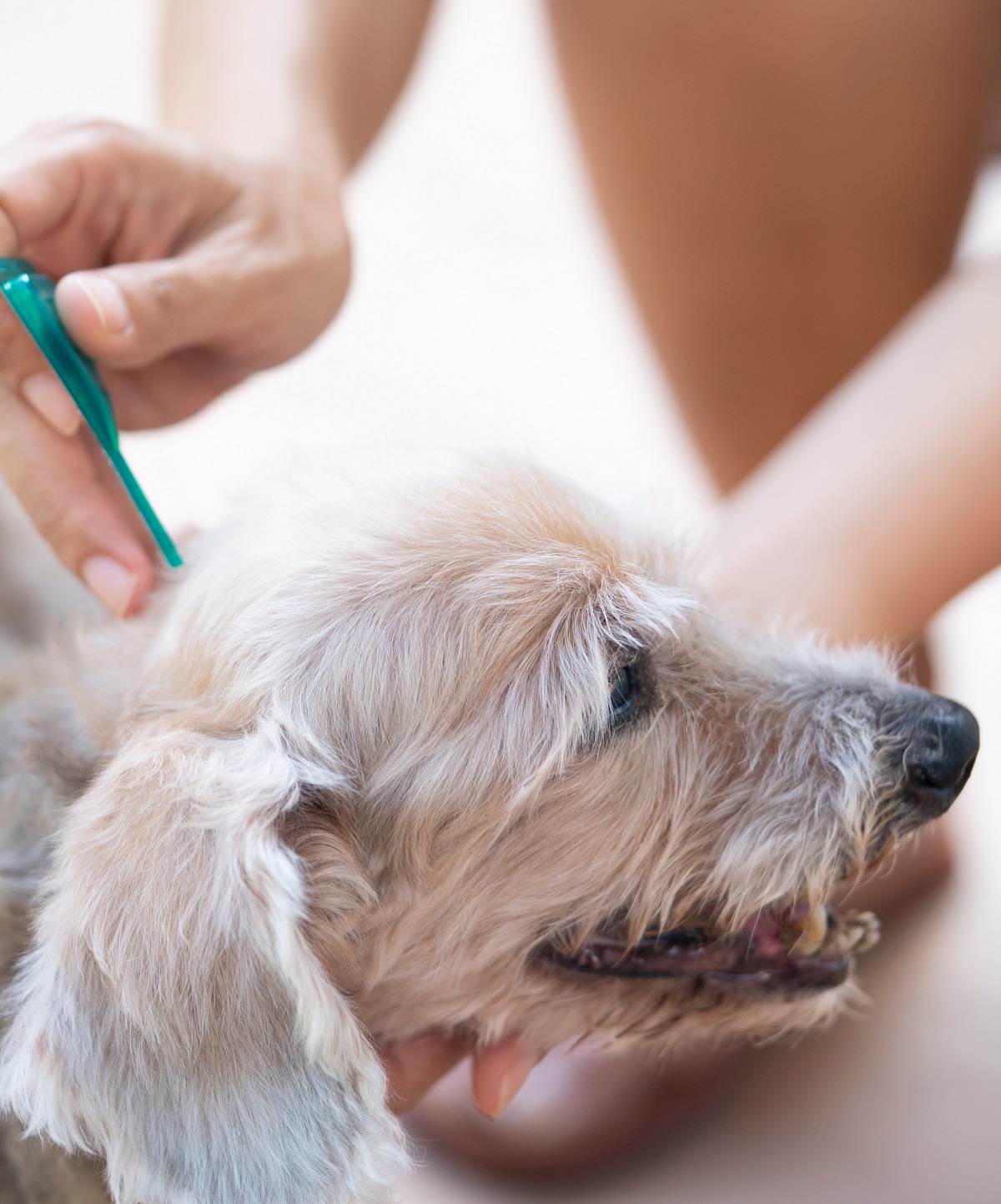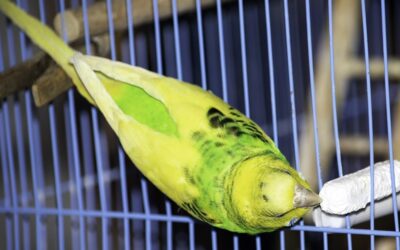If your dog suddenly looks uncomfortable and itchy, it can be easy to worry. What happened—and should you intervene? Although itchiness in dogs can have different causes, one of the more common issues is a flea allergy. These tiny, blood-sucking parasites are always annoying to have to deal with, but even more so in dogs that are allergic. A single bite can produce severe dermatitis and discomfort, so taking preventative steps is a good idea!
Below, let’s have a look at everything you need to know about flea allergy dermatitis in dogs and what you can do to help get your furry friend back to feeling their best as soon as possible.
What is flea allergy dermatitis?
As the condition’s name suggests, flea allergy dermatitis refers to inflammation of the skin that occurs when a dog that’s allergic to fleas is exposed to these tiny, annoying pests. Specifically, the problem substance is the flea’s saliva, which contains anticoagulating and immune-suppressing compounds that help the culprit feed on your pet’s blood more efficiently. Unfortunately, these compounds can also provoke a reaction in dogs that are hypersensitive to them.
FAD, in terms of its causes and effects, is similar to what happens to people with mosquito allergies (a condition sometimes called skeeter syndrome). Mosquitoes also inject a tiny amount of saliva to help their blood-sucking endeavors, which can cause seriously bothersome symptoms.
Did you know? According to research, flea allergy dermatitis is most common in young adult dogs under the age of five. It’s more common in climates, as fleas don’t do well in the cold.
Symptoms
A dog with flea allergy dermatitis (FAD) can react extremely strongly to flea saliva. There doesn’t have to be an infestation: a single bite from a single flea can provoke typical symptoms like inflammation, discomfort, severe itchiness, hair loss, crustiness, redness, and flaky skin. The effect will be much more extreme than the occasional scratching and biting associated with flea bites in dogs that aren’t allergic, although it can sometimes be difficult to tell the difference between FAD and other canine skin conditions.
If flea allergy dermatitis is left untreated, the victim’s desperate scratching and biting at the affected parts can even lead to secondary infections, which may come with sores, nasty scabbing and an unpleasant odor. It goes without saying that this is extremely unpleasant for your dog.
In most dogs, the most severe symptoms present in the “flea triangle”, basically your furry friend’s entire rear end. Obviously, you should always see a vet if your pet is struggling with skin problems, but inflammation around the lower back, tail, thighs, and groin are good indications you should specifically ask for a flea allergy test. Spotting live fleas or their droppings, logically, also strongly points towards FAD—try using a flea comb to help check if you’re dealing with an infestation.
Did you know? Research has shown that FAD is a genetic condition. It’s associated with the production of a certain type of antibody, called IgE.

Treating flea allergy dermatitis
If you suspect FAD, you can start treatment even before you take your dog to see a vet (although that’s definitely a step you shouldn’t skip!). You’ll want to go for a two-pronged approach, treating both your dog and, unless you really don’t find any signs whatsoever of fleas being present, your home.
Treating your dog
Your best bet for treating your dog is to ask your vet about the best topical flea control products. Whether you opt for drops, a flea collar, or a pill-based solution, these treatments should help prevent more fleas from bothering your pooch with their irritating saliva, allowing existing discomfort to gradually heal.
In most cases, the veterinarian will also recommend medications that will help your dog get through the healing process and stimulate recovery of the affected skin. These may include steroids, antihistamines, medicated shampoo, and ointments. In cases where secondary infection has set in, your dog may also be put on a course of antibiotics.

Treating the house
If there are fleas on your dog, then there are also fleas in your home; they actually only spend a very short part of their lifecycles tormenting our pets. The rest of the time, they may be found hanging out in your carpet, your sofa, your dog’s bed, or really anywhere else in or around your home in egg or pupa form. It’s been said that for every flea you see, there are a hundred you don’t see, especially in warm conditions. Don’t underestimate these pesky parasites, though don’t feel guilty about their presence either: it can happen to anyone, even if you keep an extremely clean home.
Your first lines of defense against fleas are your vacuum (though be sure to discard the bag’s contents after cleaning) and your washing machine. Because of the flea’s complicated life cycle, whose length can vary quite a bit depending on the conditions, home treatment is something you should ideally keep up for several months. Note: we’re currently working on a full guide to treating your house for fleas, please stay tuned!
Conclusion
Flea allergy dermatitis can make your dog’s life pretty miserable. However, in most cases it’s also very treatable—and the symptoms are preventable. Fortunately, with prompt treatment and ongoing flea prevention, most dogs recover quickly and stay itch-free. Happy dog, happy humans!
Sources







